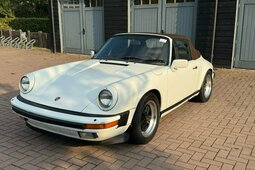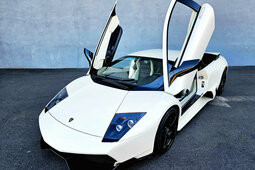When the production of the SAAB 95 started, one could order it with a two stroke V4 engine, three doors and seven seats. Even in 1959, when this model was launched, that combination was peculiar. At the time, 95 was the biggest model SAAB offered, yet it was powered by a 3 cylinder, 840 cc motor, putting out 38 hp. The car pictured here is far less radical, it is propelled forward by a four stroke, 1.5-liter V4 engine (like the one put in the Ford Taunus of that era) and it only seats five, rather than seven. This engine was introduced to replace the two-stroker in 1967.
This SAAB car was produced in quantities similar to Tesla's Model S, yet it remains relatively unknown. Although rare to see on roads today, these unconventionally engineered SAABs enjoyed popularity in Nordic countries.
Despite its evolution, the two-stroke engine heritage is still evident in this SAAB, as it features a handle-operated freewheel. This works similarly to bicycle freewheels, allowing coasting when going downhill. SAAB's two-stroke engines require the freewheel to prevent under-lubrication during high revs with a closed throttle, such as when descending a hill in gear.
The freewheel isn't the only feature that makes driving this SAAB a unique experience. The car is equipped with a 4-speed manual transmission, controlled via a stalk behind the steering wheel. While it has a conventional set of three pedals, they are positioned near the center of the car, not aligned with the steering column.
As you would expect, SAAB 95 is sluggish by modern standards. While the car weighs just under a ton, a 65 BHP engine cannot ensure swift progress. Thus it is interesting that SAAB entered the Monte Carlo rally with the 95 in 1961. The estate was chosen to compete in the race due to the fact that it was the only SAAB model that comes with a 4 speed gearbox. Surprisingly, it finished 4th overall that year with Erik Carlsson behind the wheel.
Though not popular in many countries, the unique SAAB model, produced from 1959 to 1978, gained considerable popularity in Nordic regions. During a photoshoot in Helsinki's port area, several passersby stopped to chat and reminisce about their experiences with SAABs like this one. Over 100,000 SAAB 95s were produced during its entire production run. The featured car was assembled in Uusikaupunki, Finland, and has spent most of its life in the country. Its current owner purchased it in 2010 and spent six years restoring it. Prior to restoration, the car was in poor condition, with a bent roof from a rollover accident and a stripped interior, as it was used as a cargo vehicle.
Although SAAB 95s for sale are quite rare, their prices remain reasonable, with well-maintained examples costing around 7,000 Euros. As expected, the largest selection of these cars can be found in Nordic countries. Many SAAB 95 estate components are interchangeable with the more popular 96 saloons, making it easier to maintain and restore these vehicles.
---
Discover your dream car within our Car Categories, or explore our Classic Passion Shop to uncover thrilling items from our associates!
















